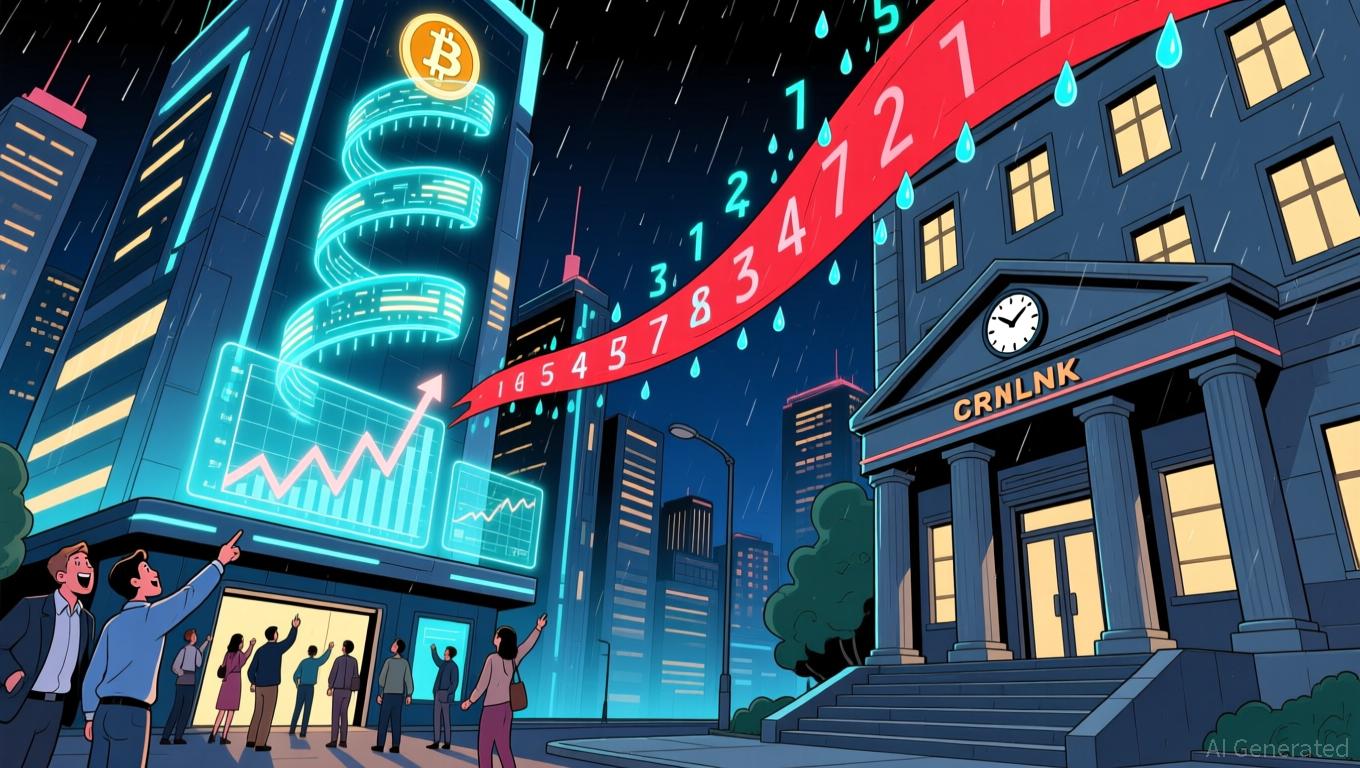Ethereum Updates: BullZilla's Calculated Approach Outperforms November's Crypto Downturn
- BullZilla ($BZIL) surged 2,381% in October, outperforming Ethereum and Pepe amid crypto market declines. - Its presale raised $1M+ with 31B tokens sold, leveraging 24-stage price engines and deflationary burns. - Analysts highlight BullZilla's structured tokenomics, 70% APY staking, and 2-year team lock-up as credibility drivers. - Projected 2,381% ROI at $0.00527141 listing price contrasts with Ethereum's 2.45% drop and Pepe's 5.92% decline. - November presale trends favor BullZilla's mathematical preci
November began with the cryptocurrency market displaying a range of trends, as

On November 1, 2025, Ethereum dropped by 2.45% as enthusiasm for ETFs faded and Treasury yields climbed. Pepe, another leading meme token, declined by 5.92% despite maintaining strong liquidity and active social channels. Experts attribute these declines to typical seasonal corrections and a decrease in speculative trading.
BullZilla’s momentum is fueled by its 24-stage pricing mechanism, which automatically increases the price after every $100,000 raised or every 48 hours. The token is currently in Stage 9A, priced at $0.00021906, with a 3.04% price hike expected in the next phase. The project’s deflationary approach—including ongoing token burns and a 24-stage burn process—has further strengthened investor trust.
The meme coin market continues to divide opinions within the crypto space. A recent LiveBitcoinNews feature on '
BullZilla’s engaging backstory and “Roar Burn” events have also helped it go viral. The project’s two-year team lock-up and 70% APY staking rewards have enhanced its credibility, addressing typical concerns about the longevity of meme coins.
Historically, November is a pivotal month for crypto projects, as new capital and year-end strategies influence market cycles. BullZilla’s approach fits this pattern, offering planned price increases and real token utility. At current rates, a $2,500 investment could potentially grow to over $62,000 if the token reaches its expected listing value.
Nevertheless, caution prevails in the market: a
As the crypto sector faces the volatility of the fourth quarter, BullZilla stands out as a structured opportunity. With Ethereum and Pepe lagging, more investors are seeking projects that combine meme-driven excitement with solid tokenomics. BullZilla’s projected 2,381% ROI and its focus on community have made it one of the most anticipated projects for November.
---
Disclaimer: The content of this article solely reflects the author's opinion and does not represent the platform in any capacity. This article is not intended to serve as a reference for making investment decisions.
You may also like
Visa Launches Program to Speed Cross-Border Payments via Stablecoins

Solana News Update: Clearer Regulations Help Crypto Yields Close the Gap with Traditional Finance
- Crypto's yield gap with TradFi narrows as LSTs and RWAs drive innovation, with stablecoins and tokenized assets bridging the 8-11% vs. 55-65% disparity. - U.S. GENIUS Act boosted institutional trust in yield-bearing stablecoins by enforcing collateral rules and AML compliance, spurring 300% YoY market growth. - Circle's 4.15% reserve returns and $740M Q3 revenue highlight stablecoin profitability, while embedded solutions make adoption "invisible" in consumer apps. - DeFi crises like xUSD depegging cause

Bostic's Departure Under Political Scrutiny Challenges the Federal Reserve's Autonomy
- Atlanta Fed President Raphael Bostic announced his retirement in November 2025, stepping down in February 2026 after nearly nine years as the first Black and openly gay Fed regional bank leader. - His tenure emphasized economic equity post-2020 protests and cautious inflation management, supporting two 2025 rate cuts while urging restraint to return to the 2% inflation target. - Bostic's exit coincides with Trump administration pressure for lower rates and potential influence over regional banks , testin

ETC rises by 0.58% as technical indicators remain mixed, with recent backtesting pointing to a possible short-term mean reversion.
- ETC rose 0.58% in 24 hours to $15.68, despite 7-day and 1-year declines of 12.28% and 37.31%. - Technical indicators show mixed signals, with short-term stabilization contrasting persistent bearish momentum. - Backtesting reveals 24-hour rebounds after 10% drops often peak at +3% within 20 days but fade after 25 days. - Analysts caution the bounce likely reflects short-covering, not a sustained reversal, amid fragile market conditions. - Strategy suggests tactical 3-10 day mean-reversion trades with stri